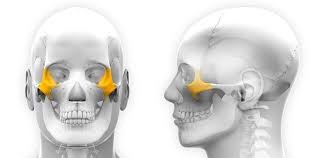What is the product of meiosis in an animal cell?
Gametophyte.
Gamete.
Spore.
Sporophyte.
Correct Answer : B
Meiosis is a specialized type of cell division that produces gametes, the reproductive cells (sperm and eggs) in animals. During meiosis, a diploid cell undergoes two rounds of division, resulting in the formation of four haploid daughter cells. These haploid cells are the gametes, each containing half the number of chromosomes found in the original diploid cell. When gametes from two parents fuse during fertilization, they restore the diploid chromosome number in the resulting zygote. Thus, the product of meiosis in an animal cell is a gamete.
HESI A2 Exam Quiz Bank
TEAS 7 Exam Quiz Bank
Find More HESI Questions
HESI A2 Questions: We got the latest updated HESI A2 Questions
100% Money Refund: 100% money back guarantee if you take our full
assessment pass with 80% and fail the actual exam.
Live Tutoring: Fully customized live tutoring lessons.
Guaranteed A Grade: All students who use our services pass with 90%
guarantee.
Related Questions
Correct Answer is D
Explanation
DNA synthesis, or DNA replication, occurs during the S phase of the cell cycle. The cell cycle is the series of events that a cell undergoes as it grows and divides into two daughter cells. The S phase is the phase of DNA synthesis, during which the cell replicates its DNA to ensure that each daughter cell receives a complete set of genetic information. After DNA replication in the S phase, the cell proceeds to the G2 phase, where it prepares for cell division by checking for errors in DNA replication and synthesizing proteins necessary for mitosis or meiosis.
Correct Answer is A
Explanation
Animals are composed primarily of eukaryotic cells. Eukaryotic cells are characterized by having a true nucleus enclosed within a membrane, along with other membrane-bound organelles such as mitochondria, endoplasmic reticulum, Golgi apparatus, and lysosomes. These cells are structurally and functionally more complex than prokaryotic cells, which lack a nucleus and membrane-bound organelles. Animal cells are the building blocks of animal tissues and organs, and they perform various functions necessary for the survival and functioning of multicellular animal organisms.
Correct Answer is B
Explanation
Replication, the process of copying DNA to produce identical daughter DNA molecules, takes place in the nucleus of eukaryotic cells. The nucleus contains the cell's genetic material, organized into chromosomes, which consist of long strands of DNA. During replication, the DNA molecule unwinds, and the enzyme DNA polymerase adds complementary nucleotides to each strand, resulting in the formation of two identical DNA molecules. Replication is a crucial process that ensures genetic continuity between generations of cells and is essential for growth, development, and repair of tissues in multicellular organisms.
Correct Answer is D
Explanation
The zygomatic arch, also known as the cheekbone or zygoma, is a prominent facial bone that forms part of the structure of the face. A fracture of the zygomatic arch would be located in the facial region. The zygomatic arch extends horizontally from the area near the ear to the region of the cheekbone, contributing to the overall shape and support of the face. Fractures of the zygomatic arch can result from trauma to the face, such as blunt force impact, and may cause pain, swelling, deformity, and difficulty with chewing or facial movement.
This question was extracted from the actual HESI A2 Exam. Ace your TEAS exam with the actual HESI A2 Exam questions, Start your journey with us today
Visit Naxlex, the Most Trusted HESI Prep Platform With Guaranteed Pass of 90%.
Money back guarantee if you use our service and fail the actual exam. Option of personalised live tutor on your area of weakness.

